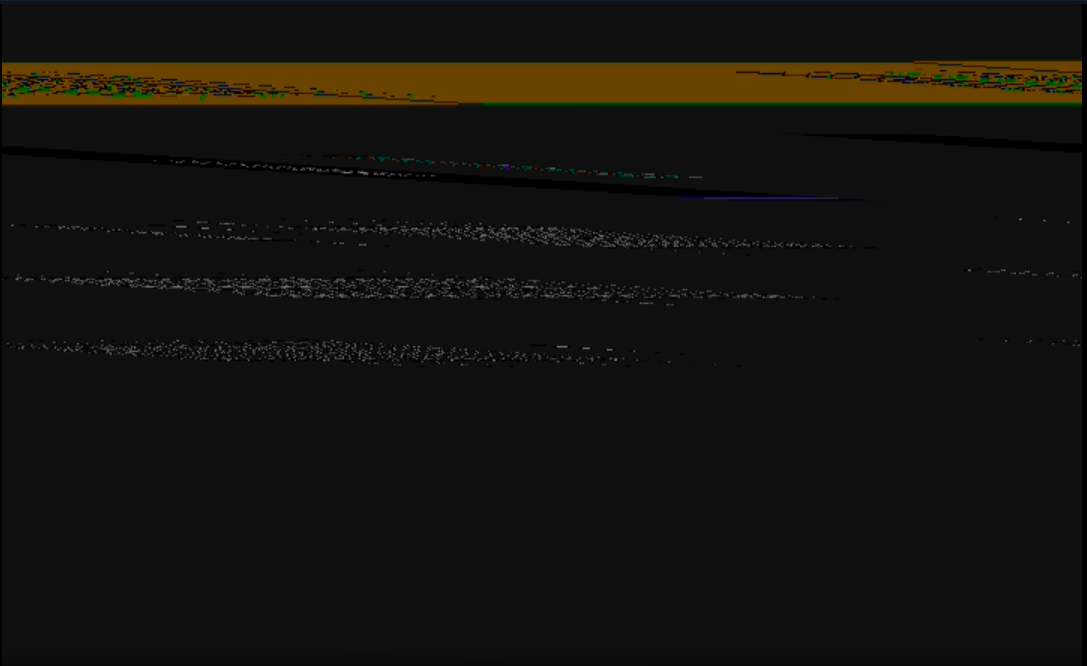我没有图像或图形方面的背景,所以请多多包涵:)
我在我的一个项目中使用JavaCV。在示例中,Frame构造了具有一定大小的缓冲区的 a 。
public void onPreviewFrame(byte[] data, Camera camera)在Android中使用该函数时,data如果声明Frame为new Frame(frameWidth, frameHeight, Frame.DEPTH_UBYTE, 2);whereframeWidth和frameHeight声明为,复制这个字节数组是没有问题的
Camera.Size previewSize = cameraParam.getPreviewSize();
int frameWidth = previewSize.width;
int frameHeight = previewSize.height;
最近,Android 添加了一种捕获屏幕的方法。自然,我想抓取这些图像并将它们转换为Frames。我修改了 Google 的示例代码以使用ImageReader。
这ImageReader被构造为ImageReader.newInstance(DISPLAY_WIDTH, DISPLAY_HEIGHT, PixelFormat.RGBA_8888, 2);。所以目前它使用 RGBA_8888 像素格式。我使用以下代码将字节复制到Frame,实例化为new Frame(DISPLAY_WIDTH, DISPLAY_HEIGHT, Frame.DEPTH_UBYTE, 2);:
ByteBuffer buffer = mImage.getPlanes()[0].getBuffer();
byte[] bytes = new byte[buffer.remaining()];
buffer.get(bytes);
mImage.close();
((ByteBuffer) frame.image[0].position(0)).put(bytes);
但这给了我一个java.nio.BufferOverflowException. 我打印了两个缓冲区的大小,帧的缓冲区大小是 691200 而bytes上面的数组是 size 1413056。弄清楚后一个数字是如何构造的失败了,因为我遇到了这个 native call。很明显,这是行不通的。
经过一番挖掘,我发现NV21 图像格式是“相机预览图像的默认格式,当没有使用 setPreviewFormat(int) 设置时”,但是ImageReader 类不支持 NV21 格式(请参阅格式参数)。所以运气不好。在文档中还写道“对于 android.hardware.camera2 API,建议将 YUV_420_888 格式用于 YUV 输出。”
所以我尝试创建一个像这样的 ImageReader ImageReader.newInstance(DISPLAY_WIDTH, DISPLAY_HEIGHT, ImageFormat.YUV_420_888, 2);,但这给了我java.lang.UnsupportedOperationException: The producer output buffer format 0x1 doesn't match the ImageReader's configured buffer format 0x23.,所以这也行不通。
作为最后的手段,我尝试使用例如这篇文章将 RGBA_8888 转换为 YUV ,但我不明白如何根据答案获得int[] rgba答案。
那么,TL;DR我怎样才能获得 NV21 图像数据,就像你在 Android 的public void onPreviewFrame(byte[] data, Camera camera)相机功能中获得的一样,以实例化我Frame并使用 Android 的 ImageReader(和媒体投影)使用它?
编辑(25-10-2016)
我创建了以下可运行的转换以从 RGBA 转换为 NV21 格式:
private class updateImage implements Runnable {
private final Image mImage;
public updateImage(Image image) {
mImage = image;
}
@Override
public void run() {
int mWidth = mImage.getWidth();
int mHeight = mImage.getHeight();
// Four bytes per pixel: width * height * 4.
byte[] rgbaBytes = new byte[mWidth * mHeight * 4];
// put the data into the rgbaBytes array.
mImage.getPlanes()[0].getBuffer().get(rgbaBytes);
mImage.close(); // Access to the image is no longer needed, release it.
// Create a yuv byte array: width * height * 1.5 ().
byte[] yuv = new byte[mWidth * mHeight * 3 / 2];
RGBtoNV21(yuv, rgbaBytes, mWidth, mHeight);
((ByteBuffer) yuvImage.image[0].position(0)).put(yuv);
}
void RGBtoNV21(byte[] yuv420sp, byte[] argb, int width, int height) {
final int frameSize = width * height;
int yIndex = 0;
int uvIndex = frameSize;
int A, R, G, B, Y, U, V;
int index = 0;
int rgbIndex = 0;
for (int i = 0; i < height; i++) {
for (int j = 0; j < width; j++) {
R = argb[rgbIndex++];
G = argb[rgbIndex++];
B = argb[rgbIndex++];
A = argb[rgbIndex++]; // Ignored right now.
// RGB to YUV conversion according to
// https://en.wikipedia.org/wiki/YUV#Y.E2.80.B2UV444_to_RGB888_conversion
Y = ((66 * R + 129 * G + 25 * B + 128) >> 8) + 16;
U = ((-38 * R - 74 * G + 112 * B + 128) >> 8) + 128;
V = ((112 * R - 94 * G - 18 * B + 128) >> 8) + 128;
// NV21 has a plane of Y and interleaved planes of VU each sampled by a factor
// of 2 meaning for every 4 Y pixels there are 1 V and 1 U.
// Note the sampling is every other pixel AND every other scanline.
yuv420sp[yIndex++] = (byte) ((Y < 0) ? 0 : ((Y > 255) ? 255 : Y));
if (i % 2 == 0 && index % 2 == 0) {
yuv420sp[uvIndex++] = (byte) ((V < 0) ? 0 : ((V > 255) ? 255 : V));
yuv420sp[uvIndex++] = (byte) ((U < 0) ? 0 : ((U > 255) ? 255 : U));
}
index++;
}
}
}
}
yuvImage对象初始化为yuvImage = new Frame(DISPLAY_WIDTH, DISPLAY_HEIGHT, Frame.DEPTH_UBYTE, 2);,DISPLAY_WIDTH和DISPLAY_HEIGHT只是指定显示大小的两个整数。这是后台处理程序处理 onImageReady 的代码:
private final ImageReader.OnImageAvailableListener mOnImageAvailableListener
= new ImageReader.OnImageAvailableListener() {
@Override
public void onImageAvailable(ImageReader reader) {
mBackgroundHandler.post(new updateImage(reader.acquireNextImage()));
}
};
...
mImageReader = ImageReader.newInstance(DISPLAY_WIDTH, DISPLAY_HEIGHT, PixelFormat.RGBA_8888, 2);
mImageReader.setOnImageAvailableListener(mOnImageAvailableListener, mBackgroundHandler);
这些方法有效,我至少没有收到任何错误,但输出图像格式错误。我的转换出了什么问题?正在创建的示例图像:

编辑(15-11-2016)
我已将RGBtoNV21函数修改为以下内容:
void RGBtoNV21(byte[] yuv420sp, int width, int height) {
try {
final int frameSize = width * height;
int yIndex = 0;
int uvIndex = frameSize;
int pixelStride = mImage.getPlanes()[0].getPixelStride();
int rowStride = mImage.getPlanes()[0].getRowStride();
int rowPadding = rowStride - pixelStride * width;
ByteBuffer buffer = mImage.getPlanes()[0].getBuffer();
Bitmap bitmap = Bitmap.createBitmap(getResources().getDisplayMetrics(), width, height, Bitmap.Config.ARGB_8888);
int A, R, G, B, Y, U, V;
int offset = 0;
for (int i = 0; i < height; i++) {
for (int j = 0; j < width; j++) {
// Useful link: https://stackoverflow.com/questions/26673127/android-imagereader-acquirelatestimage-returns-invalid-jpg
R = (buffer.get(offset) & 0xff) << 16; // R
G = (buffer.get(offset + 1) & 0xff) << 8; // G
B = (buffer.get(offset + 2) & 0xff); // B
A = (buffer.get(offset + 3) & 0xff) << 24; // A
offset += pixelStride;
int pixel = 0;
pixel |= R; // R
pixel |= G; // G
pixel |= B; // B
pixel |= A; // A
bitmap.setPixel(j, i, pixel);
// RGB to YUV conversion according to
// https://en.wikipedia.org/wiki/YUV#Y.E2.80.B2UV444_to_RGB888_conversion
// Y = ((66 * R + 129 * G + 25 * B + 128) >> 8) + 16;
// U = ((-38 * R - 74 * G + 112 * B + 128) >> 8) + 128;
// V = ((112 * R - 94 * G - 18 * B + 128) >> 8) + 128;
Y = (int) Math.round(R * .299000 + G * .587000 + B * .114000);
U = (int) Math.round(R * -.168736 + G * -.331264 + B * .500000 + 128);
V = (int) Math.round(R * .500000 + G * -.418688 + B * -.081312 + 128);
// NV21 has a plane of Y and interleaved planes of VU each sampled by a factor
// of 2 meaning for every 4 Y pixels there are 1 V and 1 U.
// Note the sampling is every other pixel AND every other scanline.
yuv420sp[yIndex++] = (byte) ((Y < 0) ? 0 : ((Y > 255) ? 255 : Y));
if (i % 2 == 0 && j % 2 == 0) {
yuv420sp[uvIndex++] = (byte) ((V < 0) ? 0 : ((V > 255) ? 255 : V));
yuv420sp[uvIndex++] = (byte) ((U < 0) ? 0 : ((U > 255) ? 255 : U));
}
}
offset += rowPadding;
}
File file = new File(Environment.getExternalStoragePublicDirectory(Environment.DIRECTORY_PICTURES).getAbsolutePath(), "/Awesomebitmap.png");
FileOutputStream fos = new FileOutputStream(file);
bitmap.compress(Bitmap.CompressFormat.PNG, 100, fos);
} catch (Exception e) {
Timber.e(e, "Converting image to NV21 went wrong.");
}
}
现在图像不再畸形,但色度已关闭。

右侧是在该循环中创建的位图,左侧是保存到图像的 NV21。所以RGB像素被正确处理。显然色度已关闭,但 RGB 到 YUV 的转换应该与维基百科描述的相同。这里有什么问题?